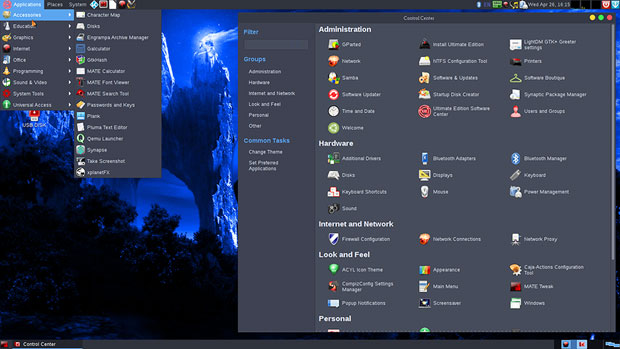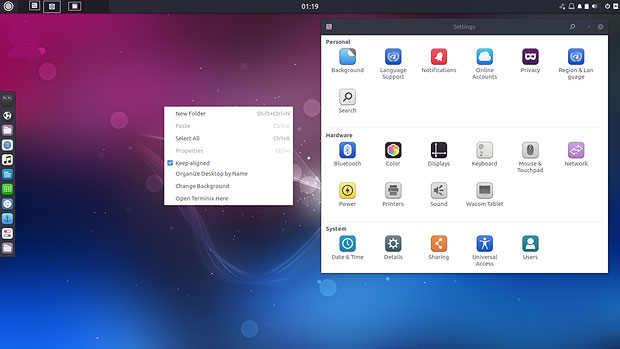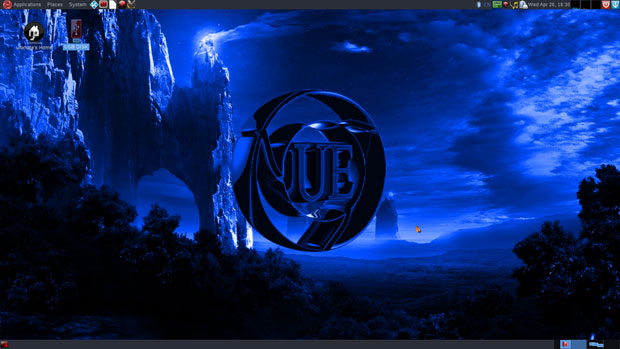
Ubuntu Budgie is one of the few Linux distros to offer integration of a Budgie desktop-only edition, other than Solus OS, whose developers created it.
Ubuntu Budgie is classy and user-friendly. It does not sacrifice performance for reliance on a simple design. It is maintained by a United Kingdom-based developer community. Previously called “Budgie-Remix,” it is an Ubuntu-based distribution featuring the Budgie desktop.
Although based on the Ubuntu Linux family, Ubuntu Budgie is not from Canonical, Ubuntu’s parent company. The Solus community originally developed Budgie from scratch and tightly integrated the desktop user interface with the GNOME stack.
Designed with the modern user in mind, Budgie is known for its simplicity and elegance. It has a plain and clean style and is easy to use.
The Budgie desktop is not a fork of any other desktop project. Its designers planned for easy integration into other distros, and it is an open-source project in its own right.
The integration of an improved Budgie desktop environment with a solid Ubuntu core makes Ubuntu Budgie an interesting and stable Linux distro.
Distro Overview
Budgie has an uncluttered design with little software bloat. It is one of the more promising new desktop variations. Some distros offer Budgie as an option. A few distro developers offer Budgie as the only desktop option.

The Ubuntu Budgie community first released version 17.04 Zesty this spring. The developers follow a rolling upgrade system that constantly upgrades previous 17.04 releases with smaller point releases.
Users of an existing Zesty version automatically receive the newest releases when they run software updates. This is a review of the point release posted earlier this month.
This release places a predefined set of applications on the Plank by default. In Budgie, Plank is a dock-like utility that gives you the quick-launch capability for a set of core applications. Previously, Plank apps were determined randomly at installation.
This release also adds numerous style and theme improvements, along with application updates.
Ravin’ Over Raven
At the heart of the Budgie desktop is Raven — an applet, notification, and customization center. Combined with the system settings panel, it is the key to controlling the user experience through easy customizations.
To access Raven, use the super key + N key combination. You also can click on the Raven icon on the panel bar. It slides out from the right screen edge, much like the GNOME 3 virtual desktop display.
Within the Raven applet, click the Applets tab to access the controls for the calendar, speaker, and microphone. Click the Notifications tab to see unread system notifications.
Click the Setting gear wheel to open the Budgie settings panel. There you find two tabs: General and Panel.

Using Raven
The General tab display lets you change widget, icon, and cursor themes. You can show desktop icons with a single click and tweak a variety of system fonts.
In the Panel tab display settings section, you can choose the placement of the panel as well as add more panels and their inner applets. You also gain granular control over individual applet settings.
At the bottom of the Raven panel are buttons to open the system settings control panel, activate power settings and power off.

Simplified Menus
Right-clicking on the desktop opens a limited menu with the ability to create a new folder, change the background, open a terminal window, and organize icons.
The application menu has no cascading views. It is a two-column design.
The left column lists the application categories. The right column lists the individual apps in that category. A search window at the top of the two columns makes it easy to locate any installed program quickly.
Workspace Limitations
One of the essential make-or-break functions of any Linux desktop is the UI’s handling of virtual workspaces. Depending on the distro and the desktop flavor involved, workspace switching can be inconvenient or very limited. Budgie’s approach to this task is somewhere in the middle of the usability scale.
Budgie has come a long way in usability growth since its early days in Solus OS. Ubuntu Budgie integrates the latest Budgie version. It is upgraded to v10.2.9 from v10.2.7. However, the functionality still falls short of what I have come to expect in the Cinnamon and MATE desktops, among others with more advanced workspace switcher functionality.
Using the procedure detailed above, I added the workplace switcher applet to the panel bar. That let me access four workspaces.
Budgie does not let me add or reduce that number, though, and it lacks the ability to map virtual navigation to set keyboard shortcuts or a right-click option to send an open window to another virtual workspace.
Software Sufficiency
With a goal of high usability out of the box, Ubuntu Budgie provides some of the best software in each category. That goal is stretched due to its honoring the mission to reduce software bloat. You get one application rather than a choice of numerous titles. Of course, you can add and remove applications to suit your taste.
The LibreOffice suite is preinstalled. You get the Chromium Web browser with Geary mail. The graphics collection is limited to an in-house photos app and Simple Scan. The Sound and Videos apps are GNOME MPV and Rythmbox Music Player. The Cheese Webcam Booth is included as well.
System tools may not satisfy Linux veterans, as the selections are really bare bones. There is a similar scarcity in the Administration and Preferences categories too. Even the Utilities are critically limited.
I am all in favor of eliminating software bloat, but that mandate goes a bit too far for my liking. It is a balancing act between having to spend time removing excessive or unused applications or adding just what you need to build the software library your way.
Bottom Line
The Budgie desktop lacks the glitz and glitter found in more seasoned desktop environments. Animation is nonexistent.
That said, Budgie is an ideal desktop environment that is very user-friendly. Its customization options and ease of use make it a great trade-off.
Still, its design seems a bit too simplified for seasoned Linux users.
Canonical’s Ubuntu Linux distro also offers users a Budgie desktop release. Do not confuse that Ubuntu flavor with the Ubuntu Budgie distro. The two desktop integrations have different appearances and feature sets.
Suggest a Review
Is there a Linux software application or distro you’d like to suggest for review? Something you love or would like to get to know?
Email your ideas to me, and I’ll consider them for a future column.
And use the Reader Comments feature below to provide your input!






















































